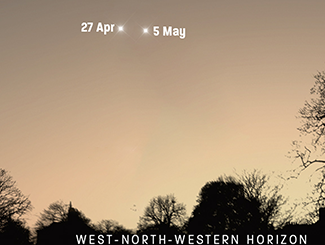
Mercury

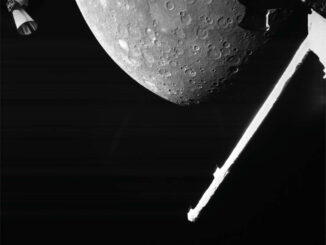

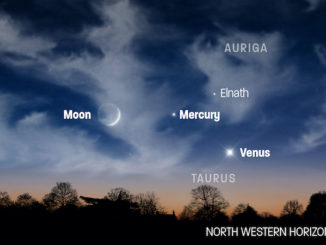


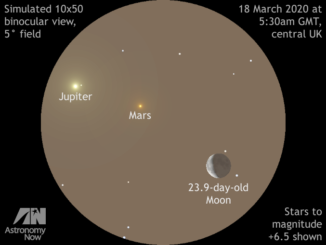
See the old Moon join a dawn planetary parade, 18–19 March
If you’re an early riser in the British Isles, let the waning crescent Moon be your guide to three naked-eye planets – Mars, Jupiter and Saturn – at dawn on 18 and 19 March 2020. This celestial conjunction occurs in the constellation of Sagittarius where you can see all four Solar System bodies within the span of a fist at arm’s length. Look for attractive binocular conjunctions too.
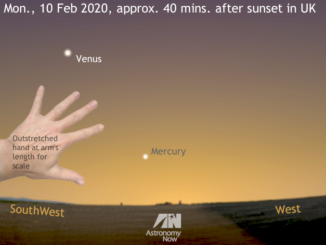
Let Venus be your guide to Mercury at its best in February
Mercury is poised to put on a fine evening show for Northern Hemisphere observers at dusk, attaining a greatest elongation 18.2 degrees east of the Sun on Monday, 10 February 2020. For ten evenings starting 3 February, the innermost planet and its brightest sibling, Venus, maintain an almost constant angular separation low in the west-southwest 40 minutes after UK sunset.
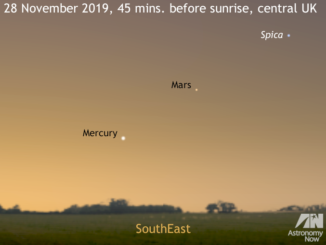
See Mercury at its best meet Mars in the dawn sky
Innermost planet Mercury puts on its best morning display of the year for Northern Hemisphere observers from late November to early December. Skywatchers in the British Isles should find a location offering an unobstructed view of the southeast horizon about 45 minutes before sunrise to get the best views, with the Red Planet and star Spica – the brightest in Virgo – also nearby.
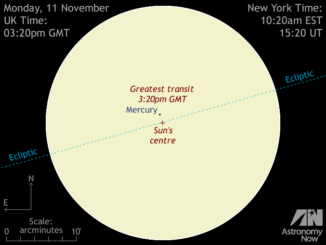
How to safely observe Mercury crossing the Sun on 11 November
On Monday, 11 November 2019 just after 12:30pm GMT, suitably equipped observers in the British Isles can witness the start of a 3.7-hour spectacle that hasn’t been seen for three-and-a-half years — the silhouette of innermost planet Mercury crossing the face of the Sun. Here’s our online guide to observing this fascinating and comparatively rare event in complete safety.
